
Humans - and all other organisms on Earth - benefit from nuclear radiation in a direct way without realizing it. It’s easy to forget when sunbathing that it all starts with nuclear reactions releasing energy deep inside the Sun.

Sunshine originates from nuclear reactions, radioactive substances are found in the mountains and the sea, and during volcanic activity a substantial amount of radioactivity is released into the atmosphere. However, no serious consequences for humans have ever been observed. (Image credits: Alasdair Turner)
The internal heat of the Earth is caused by radiation from natural radionuclides. It only contributes with about 0.05 W/m2 to the energy flux at the ground level, a small fraction of the average solar energy flux of 240 W/m2 reaching the surface of the Earth. However, this inner heat keeps part of the Earth’s core liquid, enabling movements of the continents (plate tectonics), which influence the evolution of life.
Without nuclear reactions, we wouldn’t exist.
When the Earth was formed, approximately 4.5 billion years ago, the level of radiation was about three times as high as it is today. Therefore radiation by itself does not kill life. This interpretation is strengthened by the fact that the level of radiation all over the world varies substantially, typically by factor of 10, but in some areas by a factor of greater than 100. Are people living in these regions of elevated natural radiation unhealhtier than the rest of us, more susceptible to infections, or have a shorter life expectancy ? The answer is no! So the level of natural radiation can vary by an order of magnitude without apparent consequences for human beings.
Map showing levels of natural radiation in several locations around the world (Image credits: S. M. J. Mortazavi/Health Research Foundation, Kyoto, Japan):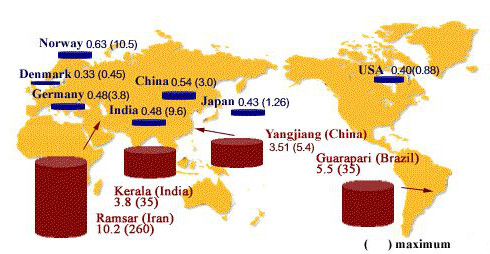
Does the fact that we are insensitive to such large variations of natural background radiation tell us something? Let's think a little.
Does it take long to react when you see a car driving at you? Certainly not, because if not your fast reaction, your life would be in danger. Your sight and very fast transmission of appropriate signals to your brain are of utmost importance to your survival. The same can be said about our senses of hearing, smell or taste (otherwise we could for example eat spoiled food and get sick).
When temperature changes by 20% from 300K (the so-called "room temperature") we are subjected either to freezing or to excessive heat. Both threathen our life, so we must be warned against such variations of temperature. Therefore, evolution equipped mankind with the ability to sense very small temperature changes, of the order of about 2 degrees, i.e. less than 1% of the room temperature.
The level of natural radiation can vary not by 20% but by about 1000% and it does not influence our life. Why are we not equipped with a sense tuned to nuclear radiation? The fact that we do not feel this radiation, do not sense it at all, could be the best indication that under normal conditions nuclear radiation as such is not harmful. On the other hand, why should nuclear radiation, just one form of energy remain dangerous in the evolution process, when all other forms are used in the development of organisms?
But perhaps natural radiation and man-made radiation have a different impact on us? Perhaps if a certain level (threshold) of radiation is crossed radiation starts to produce damage that cannot be tolerated by our organisms? The answer to the first question is simple: radiation always acts the same way and the result depends on the type of radiation, its dose and time of exposure. The effects also depend on the age, sex, general state of health etc. The second question is much more difficult to answer.
By studying the nuclear reactions that happen naturally around us, scientists have been able to develop technology that uses these processes in ways that benefit us.
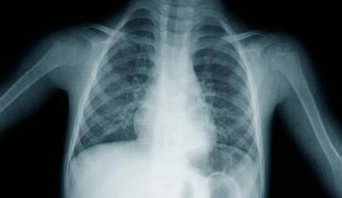
X-rays are the most frequently used ionising radiation in diagnostics. They were used in medicine within a year of their accidental discovery in 1896 by Konrad Roentgen. They are employed as an examination tool but also in therapy. X-ray pictures allow doctors to see what’s happening inside the human body without having to open it up. In typical X-ray examinations the radiation dose is too low to pose any risk, however we should be more cautious when pregnant women are concerned because the potential risk to the fetus is still being debated.
Nuclear radiation at high doses is used in cancer treatment. Worldwide, more than 5 million such treatments are carried out annually, helping severely ill people. A multitude of diagnostic procedures, about 30 million per year, are carried out using radioactive substances. If one adds some 2 billion X-ray diagnostic examinations the scale of the use of ionizing radiation is quite impressive.

Moreover, are you aware that all surgery which requires aseptical conditions benefit a lot from sterilization by irradiation of the instruments? Syringes, injection needles, scalpels ... all surgical equipment has to be completely sterile so that the patient doesn’t get exposed to any dangerous germs.
But what about products of everyday use? Are you using any beauty creams? You would certainly not like to have cream which is dangerous to your skin. The process of hygenization of such products goes through irradiation of the cream prior to its packaging and retail.Do we want food which lasts longer or seeds that produce larger crops? Irradiation does the job. Instead of chemicals, irradiation eliminates infectious microbes (Salmonella for example), and in addition does not contaminate the food like chemicals do.
Dangerous insects can be fought by irradiating part of their population to make them sterile. These insects can mix with unirradiated insects but they are unable to breed. This keeps their population numbers to more manageable levels.If you drink milk, you probably should know that the plastic containers used for packaging the milk were likely irradiated by gamma rays (the milk itself is treated differently).

Nuclear power plants are another very important application of nuclear reactions. Traditional electric power plants - burning coal or oil - produce lots of smog, which is very harmful to the environment. They’re using up fossil fuels, which are quickly running out and, in addition, their extraction from the Earth crust is damaging the environment. The use of nuclear energy can substantially reduce the amount of greenhouses gases released into the atmosphere, and far less fuel is needed to get the same amount of power.

In archaeology, nuclear technology is used to date artefacts (e.g. by means of 14C). In art, one can use radiation to tell whether or not the objects are real or forged. Radiation can also tell us the chemical composition of an unknown substance: radiation excites atoms in the substance and force them to emit electromagnetic radiation typical for a given atom hence indicating its presence.
Image right: Accelerator Mass Spectrometry installation at the University of Oxford.These are just a few of the practical uses of nuclear reactions, without mentioning applications in scientific research. No doubt, mankind benefits a lot from nuclear radiation.
As beneficial as nuclear radiation can be, we are afraid of it, and we have good reasons to be. We all know the traumatic experience of Hiroshima and Nagasaki - the two Japanese towns which were attacked with atomic weapons. Within an extremely short time, vast portions of towns were destroyed and about 200,000 people lost their lives. Some of the survivors contracted cancers that would probably not have occured if not the nuclear radiation released from the bombs. In Hiroshima alone, between 1950 and 2000, 46% of deaths from leukaemia and 11% of deaths due to solid cancers were caused by the radiation from the bombs.
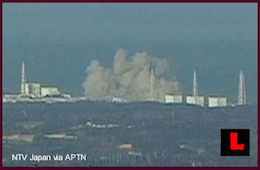
Of course, those were instances when nuclear technology was deliberately used as a weapon. However, accidents can sometimes occur in controlled, ‘safe’ conditions. The Chernobyl accident in April 1986 and the Fukushima Daiichi disaster in March 2011 are sobering examples.
Explosion at Fukushima Daiichi Nuclear Power Plant - March 12, 2011 (Image source: NTV/Reuters).The dangers of nuclear technology are often portrayed in the media. We often read, hear or view frightening news about nuclear radiation. Most of us are taught that nuclear radiation is something we should totally avoid, and the fear of radiation is enhanced by the fact that we do not see, feel, smell or hear radiation. But how founded our fears really are? Should we be afraid, or is it becoming an irrational phobia? We benefit from nuclear power in hundreds of ways and the safety restrictions for nuclear facilities and power plants are very strict and well maintained. Accidents are very rare.
If we consider the risk connected with ionising radiation it is sensible to think first about the risks which are more familiar to us. Almost every activity brings some risk, sometimes even deadly.


The risks we assume also depend on the places we work. Working one year in a commercial trade you encounter 10 microrisks, in a factory - up to 100, in the transport industry - 400, in a coal mine - 800, and on an oil platform in open sea - 1800.
As we’ve seen, risk is an unavoidable part of our everyday activity. However, we are so used to most risk factors that usually we do not remember them or we simply accept the risk. Sometimes, many people will do things that they know are risky but choose not to consider them. For example, speed limits are for safety and yet many people choose to speed even though they know it is dangerous.

It may be thus reasonable to consider also what we can call an acceptable risk. This is by definition a very subjective notion, as different people will feel differently about what is acceptable. Their situations will change their minds too. Sometimes people who live far away from a nuclear power plant will accept the risk connected with having such a plant, while the ones living close to the site may not. People who work in the plant will have a different view entirely as the closer it is, the easier it is to get to work.
We should also be aware of fact that for the broad society the risk calculations based on certain statistical factors are never fully convincing. People are less interested in the world-average values but in their local safety. And in the case of nuclear installations and a possible terrorist attack – no calculations can be truly useful. All we can say is that, under normal circumstances, the safety standards in nuclear technology make the nuclear risk much smaller than the risk connected with any other technology.
Paracelsus, a German physician and philosopher who lived in the 16th century, while studying the effects of various chemicals on health, drew the conclusion that it is a dose which makes the poison.

For medical procedures, when the radiation is used for diagnostic purposes (like X-ray images) the dose is limited to a safe level which still allows good imaging of our organs. However, in radiotherapy, the only aim of the physician is to fight the cancer and the dose used may be very high, although targeted on the tumor, so it does not present serious danger to the healthy parts of our organism. Complications appearing after such treatment are not rare but are mostly curable.
Here is a table showing the microrisks associated with some medical diagnostic procedures:| Medical procedure |
Typical effective dose [mSv] |
Risk [microrisk] |
| X-ray examination of a limb | 0.01 | <0.5 |
| Dental X-ray | 0.01 | <0.05 |
| Chest X-ray | 0.02/film | 1 |
| Head X-ray | 0.07 | 3.5 |
| Head tomography | 2 | 100 |
| Chest tomography | 8 | 400 |
| Bone scintigraphy using Tc-99m | 4 | 200 |
| Dynamic studies of heart using Tc-99m | 6 | 330 |
As one can see, the relatively high risk of a chest tomography is not larger than the risk of working one year in the transport industry. The uses of these procedures dramatically outweigh any possible negative effects in almost all cases and, in addition, doctors usually only use them as a last resort.
| Quantity | Unit | Definition | Notes |
| Absorbed dose (D) | gray (Gy) |
The energy absorbed in the medium from the radiation | 1 Gy = 1 J/kg |
| Equivalent dose (H) | sievert (Sv) | H = Q × D, where D is the absorbed dose and Q is the Relative Biological Effectiveness (RBE). | The equivalent dose can not be measured directly. For example, RBE is 1 for gamma radiation, 5-10 for neutrons, and 20 for alpha radiation. |
| Effective dose (E) | sievert (Sv) | Tissue-weighted sum of the equivalent doses in all specified tissues and organs of the body. | Takes into account the sensitivity to radiation of various body tissues. 1 Sv = 1 J/kg |
| Activity | becquerel (Bq) | Number of disintegrations per second | This unit is independent of the type of radiation or its energy. 1 Bq = 1 s-1 |
From studies of survivors of Hiroshima and Nagasaki one estimates the excess risk of contracting cancer at 5% per Sv. However, given that approximately 20% of human deaths are due to cancers, our normal risk of contracting deadly cancer is already 200 000 microrisks. This means that in a population of 10000 people irradiated with a dose of 1 Sv, 500 cases of cancer will appear in addition to 2000 cancers due to other reasons.
Populations inhabiting naturally high radiation regions are studied in order to evaluate the effects of small doses. One hypothesis is that the adverse health effects of radiation are linearly dependent on dose, even at the lowest doses. This is known as the Linear No-threshold Hypothesis (LNT). Its great advantage is the simplicity and easiness of calculating expected effects. However, after the Chernobyl accident the LNT estimate of the number of additional cancers in USA due to the nuclear fall-out from Chernobyl was completely wrong and no additional cancers due to this event have ever appeared in the USA. Therefore, in the low dose regions either the 5% per Sv risk factor is heavily overestimated or, in general, the LNT hypothesis should be rejected.For example, swallowing 100 tablets of paracetamol at once would probably result in death. Then, according to the LNT hypothesis, the risk factor connected with each tablet is 0.01. Does this mean that if 100 people will take just one paracetamol, one of them will die? This is unlikely, which suggests that the relationship is in this case non-linear.
The effect-dose relationship is very likely to be non-linear as well.The effects of radiation are often described as stochastic or deterministic effects. A better division would be early and late effects, but it is not the conventional terminology.
Deterministic effects are simple to evaluate: when the radiation dose exceeds a certain threshold value, an adverse effect (skin burns or necrosis, for example) appears. They imply high doses, and are fairly rare. Stochastic effects are a consequence of a purely statistical "hit" of a living cell by an ionizing particle (alpha, beta or gamma) and the creation of dangerous chemical ions known as free radicals. These radicals attack DNA and as a result the cell can start to divide and multiply in an improper way. In other words the cell may mutate and become a cancer cell. According to this reasoning even a tiny radiation dose has a chance of being disastrous. And if the effects are statistical then they can increase linearly with the dose.
| Deterministic vs. stochastic models | |
| In deterministic models | the output of the model is fully determined by the parameter values and the initial conditions. |
| Stochastic models | possess some inherent randomness. The same set of parameter values and initial conditions will lead to an ensemble of different outputs. |
However, about 15000 particles pass through our bodies every second. During a medical X-ray alone we are exposed to 1011 gamma rays. Then, based on the LNT hypothesis, the chance of malignant mutation must be very, very low at about 1 particle in 30,000,000,000,000,000 (30 quadrillion). In 70 years of life the resultant chance of contracting cancer because of this radiation can be estimated at only 1 in 900.
Our immune system protects us efficiently against numerous diseases, and by taking certain medication (vaccines for example) we know that it can be activated and be ready for fighting the enemy once it appears in our body. In mice irradiated with a relatively small dose of up to 200 mSv, the level of antibodies increased substantially and decreased only after very large doses. In fact, mice irradiated with the dose of 0.5 - 1 Sv exhibited a smaller number of cancers than the non-irradiated mice population. Low dose irradiation is often used for cancer treatment and high radiation doses used in cancer therapy are better tolerated once low, protective doses are delivered earlier.

About one million mutations occur naturally in every cell every day! About one tenth of them cause damage to double-strand DNA. To survive, our body has a natural repairing system. However, if the damage takes place very quickly and over a large scale, it may not be possible to repair it quickly or thoroughly enough. This is why the effects of ionizing radiation depend not only on the dose, but also on the dose rate, which suggests a non-linear response.
Despite having studied the effects of radiation for a long time, we still do not have a reliable risk model. At the moment, many risk models are using a number of parameters which are fitted from experiment, but whose statistical power is not great. Therefore we must also rely on common sense, which follows from observation and not from unreliable speculations.
This was the response of people who could be expected to be better-informed, critical and often having scientific expertise. Thus, what can we expect in the case of everyone else whose opinion is shaped mainly by mass media and most of the media usually exaggerate real risks. This is why people who often object to nuclear power plants due to safety concerns will consider the risk of using X-rays to be lower than it really is.
This means that, in a population of one million people irradiated with a dose of 1 Sv one expects 50000 excess deaths. If the dose is reduced to 1 mSv, the number of death is reduced to 50, equivalent to 50 microrisks. We should stress that the consistency of our reasoning requires an instantaneous delivery of the dose, as the basis of LNT are the effects of atomic explosions in Japan, which occurred in about 10-8 second.
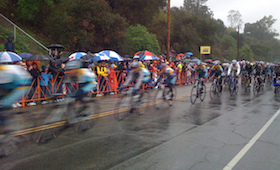
Meanwhile, the 1 mSv annual excess dose is causing real economic costs. Cohen's estimate of the cost of hypothetically saved life due to such a low dose limit translates into a $2.5 billion yearly cost for the US taxpayer. This could be greatly reduced if the radiation dose limit would be raised by a factor of 10, consistent with the typical worldwide range of the natural level of radiation.
We are exposed to natural nuclear radiation all the time, while humanity produces radiation artificially with huge benefits but also carrying some risks. The benefits include nuclear power, uses in sterilization and in medical procedures that help save millions of people.
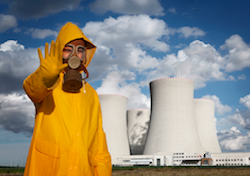
It is hoped that the governments and the public opinion on nuclear technology will evolve, as alternative energy is a very pressing issue and nuclear power is arguably the safest, cleanest and most efficient way of generating large amounts of electricity. If decisions will be carried on purely scientific grounds, without the influence of political or economic factors, there is a chance that in the future nuclear radiation will be treated on an equal footing with other risks. The higher the risks, the more we are frightened. But the more we are frightened, the more efforts should be put in order to understand what we are afraid of and whether our fears are grounded.
